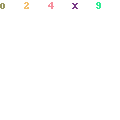 If you are seeing a braided river and some interesting land use patterns - an interface of physical and human environments, then you have definitely found your geographical eye!
If you are seeing a braided river and some interesting land use patterns - an interface of physical and human environments, then you have definitely found your geographical eye! This river which Mark crossed earlier today is another of those wonderful braided rivers we've been seeing in the last few days. This one is the Waimakariri, seen here looking east towards Christchurch and the Pacific Ocean and below, from river level, looking at the bridge Mark would have crossed....
This river which Mark crossed earlier today is another of those wonderful braided rivers we've been seeing in the last few days. This one is the Waimakariri, seen here looking east towards Christchurch and the Pacific Ocean and below, from river level, looking at the bridge Mark would have crossed....
 The same bridge features here on this image of the A1 highway just north of Christchurch. Beside the river there is evidence that the abundant gravels are extracted and presumeably end up as road bottoming or in the contruction industry. Incidentally, the milky blue colour of the river water in these braided rivers is typical of glacial outwash around the world and derives from the fine suspended sediment in the water.
The same bridge features here on this image of the A1 highway just north of Christchurch. Beside the river there is evidence that the abundant gravels are extracted and presumeably end up as road bottoming or in the contruction industry. Incidentally, the milky blue colour of the river water in these braided rivers is typical of glacial outwash around the world and derives from the fine suspended sediment in the water. The other interesting feature of the view west of Christchurch (above) are the bold stripes within what looks like woodland to the north of the river..

I have to say that I have never seen woodland planted in this way before. However, there is a clue in what lies around. The area is clearly quite dry and much of the land is irrigated using a pivot system. Putting 'Eyrewell forest' into Google provided an answer. It's a long answer but the preamble gives the gist ... "if your forest is where the climate dishes out damaging winds, and if those winds come from predictable directions, damage due to wind can be significantly minimised through the use of specific management practices." Basically the area had a history of severe damage to the forest due to north west gales. These winds are like the fohn in Europe and are not only strong but also dessicating as the winds descend from the mountains onto the plains. To combat this a new layout was adopted which aimed to provide maximum shelter to the growing trees. It is apparently the only example of this type of forest management in the Southern hemisphere.
 North of Christchurch, the plains gradually narrow as the mountains 'close in' on the coast. However, this has the added advantage of creating pockets of land which favour the cultivation of vines. Apparently the area has the warmest summers and driest conditions of all the wine producing regions of South Island and this region in the north of the Canterbury plains is one of the best known wine producing areas in New Zealand. Mark will certainly have cycled past a lot of vineyards today such as this one above in the Waipara valley.
North of Christchurch, the plains gradually narrow as the mountains 'close in' on the coast. However, this has the added advantage of creating pockets of land which favour the cultivation of vines. Apparently the area has the warmest summers and driest conditions of all the wine producing regions of South Island and this region in the north of the Canterbury plains is one of the best known wine producing areas in New Zealand. Mark will certainly have cycled past a lot of vineyards today such as this one above in the Waipara valley.
 The image below (taken along this stretch of the road) gives some indication of the terrain
The image below (taken along this stretch of the road) gives some indication of the terrain 
 There will have certainly been a lot of climbs for Mark today and it will doubtless have been some relief to emerge from the hills at the end of the day on to the small coastal lowland surrounding Kaikoura . If photographs are to be believed, it has a strikingly beautiful setting...
There will have certainly been a lot of climbs for Mark today and it will doubtless have been some relief to emerge from the hills at the end of the day on to the small coastal lowland surrounding Kaikoura . If photographs are to be believed, it has a strikingly beautiful setting...



No comments:
Post a Comment